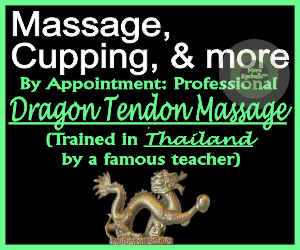D
Douglas Nelson, L.M.T.
Guest



This column from the Massage Therapy Foundation provides a road map for massage therapists to learn about studies on massage and understand why involvement in massage research is important in advancing the massage field.
In this inaugural column, MTF President Douglas Nelson gives an overview of the state of massage therapy research.
Research endeavors in the field of massage therapy are growing substantially in number, quality and importance. In this, the first in a series of columns about massage therapy research, I would like to explore why research is important on several levels — personal growth, professional education, outreach to colleagues, and educating the public at large.
At its essence, research is a formalized and structured process of curiosity. As with all forms of discovery, it begins with an insightful question.
Research methodology explores various ways to test possible responses to the initial question. This is parallel to what we, as massage therapists, have experienced countless times in our own practices. Perhaps clients share that when we address a certain muscle or structure they experience a positive effect in a distant area of the body or in a manner that is surprising to us.
Is that a random experience? Can it be replicated; is this true for other people as well? Is it dependent on the manner in which we addressed the tissue? Is it dose or frequency dependent? These are questions we ask in the effort to refine our skills and serve our clients effectively.
Research in massage therapy offers our profession a way to formally explore these questions. That exploration can be done individually — such as through a case report describing an experience with one client — or collectively, as in a large-scale study done with multiple therapists and with a large number of clients.
At its most basic level, the process is the same: Formulate a clear question, come up with a possible explanation, test the theory using every means available, and then evaluate the response. Most often this process leads not to an absolute answer but unveils a host of deeper questions not previously considered. The process of discovery is never-ending.
It is highly likely that a large formal study began first as an informal question; and those questions are likely to emerge from clinical practice. That is the reason sharing your clinical experience through case reports can be very valuable. While it is true that a series of case reports does not constitute evidence, these individual experiences may, indeed, be the seed of a larger and more encompassing study.
A Deeper Understanding
The most compelling reason to explore the research literature is to deepen your own understanding of the depth and complexity of this amazing field of massage therapy. As a parallel, one might walk through the woods and marvel at the height of the trees, overlooking the unseen root system which is likely as deep as the trees are tall. The unseen world might be richer and more complex than what is actually seen.
In the same way, observing hands touching the muscles of the back reveals only the surface of a vast communication system which we barely understand. Research invites us into a world of endless discovery and exploration of the mysteries of the human body we connect with every day in the massage room. The deeper we dive into this field, the richer and more intriguing it becomes.
By studying the literature, we broaden our knowledge base, exploring a multitude of critical questions and possible responses. With that deeper understanding, we can make better choices about the approaches we use and why we use them. In this way, embracing massage research does not abandon the art of massage; it enhances it. Anything that deepens our understanding deepens the art as well.
Shared Knowledge
As someone who has been in the field for more than 40 years, I have often experienced the ability of massage therapy to change someone’s life, bringing relief and hope when none seemed possible. This may have been your experience as well. It is quite possible that your beginnings in massage therapy originated with you as a recipient, and you wanted to do the same for others. How do those of us in the field convey the power and promise of massage therapy to our colleagues in the health care community?
To answer that question, I invite you to imagine you and I travel to a faraway land, where the people in that culture struggle with problems that massage therapy is ideally suited to address. While we know massage therapy can help, there is a sense that people do not understand how we can be of service. If we do not speak their language, it is impossible to communicate our intentions effectively.
We can wonder why they do not understand our capacity to help. But it is not their responsibility to understand us; it is our responsibility (and our opportunity) to understand them by speaking in a language they can understand. In the health care world, that is the language of science. The more conversant we are in that language, the more we can serve effectively.
As an example, I recently spoke to students at the University of Illinois medical school. Before my presentation, the students had already explored the massage therapy research literature to know more about the field.
I did not have to make the case for massage; the literature had already done that for me. Additionally, the medical students were much more likely to realize massage therapy’s potential from the research literature than from listening to one therapist (me) claim the work can do amazing things.
As a result, the students, professors and I spent the session exploring ways that massage might fit into complementary care, rather than spending time validating the work. This is a compelling reason to continue adding depth and breadth to the massage therapy literature.
Self-Reflection
Each time I speak to a group of physicians, I share not only what we have learned in the literature, but also reveal areas yet to be explored. For instance, it is not uncommon to hear a client say something like, “I tried massage and it didn’t really help.” In the world of just about every other intervention, dosage and frequency matter.
We understand this with supplements, medications and exercise; but somehow massage is supposed to solve any problem in 60 minutes or less.
While there are a few studies on dosage and frequency, we need many more. What is the optimum frequency? What session length is most effective, yet financially feasible for the client? There is much work to do; and we need a large body of data before we can draw any real conclusions.
Every time I point out such weaknesses, the reaction from my audience is the same: deep respect. While it may seem counterintuitive to draw attention to deficiencies, it makes perfect sense.
The ability to share your vulnerabilities invites audience members to acknowledge theirs as well.
Every discipline has gaps in its knowledge base. Massage therapy research endeavors to show other disciplines that we, as a profession, are self-reflective, honestly examining our strengths and weaknesses to serve the public in the best way possible.
Get Involved
How can you become involved in integrating and implementing research concepts in your practice? One great way to start is by exploring the website of the Massage Therapy Foundation (MTF), a non-profit organization dedicated to advancing the massage therapy profession through scientific research, education and community service.
MTF provides many free tools and other resources to help therapists thrive and deliver quality care. Its Research Perch podcasts, continuing education courses, research conferences, and downloadable visual abstracts and posters make research appealing and easy to understand. In partnership with the Registered Massage Therapists of British Columbia (RMTBC), MTF also publishes an open-access, peer-reviewed research journal for our profession: the International Journal of Therapeutic Massage and Bodywork (ijtmb.org).
Anyone searching the research literature for a massage-related topic is likely to end up in a journal sponsored by our own profession.
On behalf of the Massage Therapy Foundation, I invite you to deepen your understanding of research by utilizing the MTF’s many resources. Stay tuned for every-issue MASSAGE Magazine columns, where we will further explore topics pertaining to the fascinating world of massage research. We look forward to sharing these insights with you and welcome your feedback.
About the Author:


Douglas Nelson, LMT, BCTMB, is president of the Massage Therapy Foundation, which advances the knowledge and practice of massage therapy by supporting scientific research, education and community service. Nelson began his career in massage therapy in 1977 and maintains an active clinical practice. He has served as a neuromuscular consultant to NBA and NFL teams, as well as high-level musicians. His book, The Mystery of Pain, was publishing by Singing Dragon in 2013.
Related Posts
Comments
comments




































































































